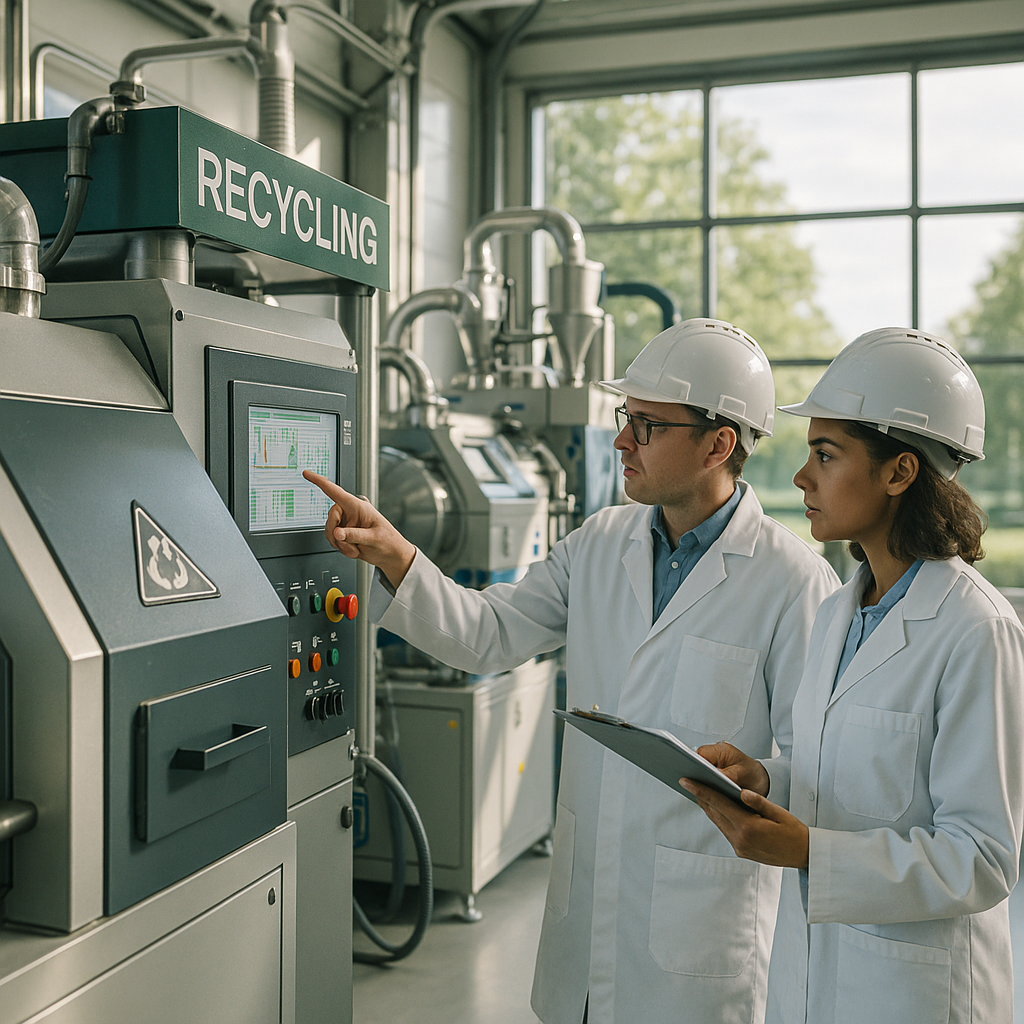5901 Botham Jean Blvd, Dallas, TX 75215
The Strategic Imperative: A Guide to Rhenium Recovery from Superalloys
November 4, 2025Rhenium ranks among Earth’s scarcest elements, with a crustal abundance of just 0.4 parts per billion. This strategic element commands significant value due to its essential role in high-performance applications. Global annual production reaches only 50 tons, yet demand continues to rise as the aerospace and power generation industries increase their reliance on advanced materials.
Nickel-based superalloys depend on rhenium for superior creep performance at extreme temperatures exceeding 1000°C. In jet engine turbine blades and power generation components, rhenium enhances the alloy’s ability to withstand prolonged stress without deformation.
The element integrates into the gamma matrix phase, significantly slowing diffusion processes and strengthening interfacial bonds between crystal phases. This unique strengthening effect cannot be replicated by substitute materials without substantial performance losses.
What are the Main Technologies for Rhenium Recovery?

Recovering rhenium from superalloy scrap involves sophisticated processing methods that integrate various metallurgical techniques. These technologies aim to extract rhenium selectively while preserving other valuable metals in the scrap.
The recovery process usually employs two primary pathways. Pyrometallurgical methods use high-temperature processing to volatilize or concentrate rhenium, while hydrometallurgical techniques use aqueous solutions and chemical reactions for dissolution and separation.
Electrolytic Decomposition Methods
Electrolytic decomposition is one of the most effective methods for rhenium extraction. This process involves low-frequency electrolysis in hydrochloric acid solutions at 15 to 25 weight percent concentration.
The method starts with placing superalloy scrap in an electrolytic cell. After the electrolytic process, the remaining material undergoes oxidizing leach treatment using sodium hydroxide–hydrogen peroxide solutions to further extract rhenium from the scrap matrix.
Following the leaching phase, rhenium recovery occurs through ion exchange processes, achieving high recovery rates while maintaining selectivity for rhenium over other metals in the scrap.
Molten Salt Digestion Processes
Molten salt digestion offers an alternative high-temperature approach for rhenium recovery. This method uses molten salt mixtures with 60 to 95 weight percent sodium hydroxide and 5 to 40 weight percent sodium sulfate.
During the digestion phase, processing temperatures range between 800 and 1200 degrees Celsius. Operators often enhance the process with sodium carbonate and oxidizing agents like sodium nitrate.
After digestion, the resulting product dissolves in water for subsequent hydrometallurgical separation of individual metals. This approach enables comprehensive metal recovery from complex superalloy compositions.
Oxidation and Sublimation Techniques
Oxidation and sublimation methods exploit rhenium’s ability to form volatile oxides. The process converts rhenium into a sublimable oxide by heating the material in an oxidizing atmosphere.
This technique allows for rhenium isolation through volatilization of the oxide compound. The volatile oxide is then collected via condensation for further processing into marketable rhenium products.
The method is especially effective for materials where rhenium concentrations make direct extraction challenging, providing a clean separation mechanism that avoids complex chemical interactions.
Acid Leaching Approaches
Acid leaching includes various methods using different acid systems. Hydrochloric acid leaching selectively dissolves target metals, leaving others in the residue.
Two-step leaching processes initially extract base metals like nickel, aluminum, chromium, and cobalt using 4 mol/L hydrochloric acid. Rhenium stays in the residue during this initial phase.
The second step involves leaching rhenium with in-situ generated chlorine in the same hydrochloric acid solution, achieving selective rhenium extraction before using solvent extraction for final purification.
Pyrometallurgical Pretreatment Methods
Pyrometallurgical pretreatment processes superalloy scrap with aluminum granules at around 1500 degrees Celsius, forming Al3Ni compounds.
Following pretreatment, the process continues with two-step hydrochloric acid leaching. The first step extracts nickel, aluminum, cobalt, and chromium from the pretreated material.
The subsequent leaching targets rhenium extraction from the remaining residue using electrogenerated chlorine, leaving tantalum behind while successfully recovering rhenium content.
These recovery technologies highlight the complexity required for effective rhenium recycling. Each method offers specific advantages depending on the composition of the source material and desired end products. Selecting the appropriate technology depends on factors such as scrap composition, processing costs, and environmental considerations.
What Challenges Hinder Industrial Adoption?

The path from laboratory success to industrial-scale rhenium recovery faces significant obstacles. Numerous research efforts have developed promising techniques for extracting rhenium from superalloy scrap. However, commercial viability remains elusive due to a complex array of economic, technological, and regulatory barriers.
Economic Barriers Drive Cost Concerns
Financial viability represents a major hurdle for industrial rhenium recovery operations. Hydrometallurgical processes require expensive and highly selective solvents like CYANEX 272 for cobalt-nickel separation and thiocyanate-based compounds for rhenium-molybdenum separation. These specialized reagents often have limited reuse cycles, driving up operational costs.
The economics become more challenging when considering throughput limitations. Unlike bulk pyrometallurgical smelting operations that process large volumes, rhenium recovery plants typically operate on smaller scales due to the precise chemical control requirements. This constraint reduces economies of scale and makes the process less competitive against primary rhenium production.
Market volatility adds another layer of economic uncertainty. While nickel prices might hover around $20,000 per tonne, processes only remain profitable when high-value critical raw materials like rhenium, which can reach $1,590 per kilogram, offset the operational expenses. Price fluctuations can quickly render recovery operations uneconomical.
Technological Complexities Create Processing Challenges
Technical challenges stem from the inherent complexity of superalloy compositions. These materials typically contain 10 to 15 alloying elements, with many exhibiting overlapping chemical properties that complicate selective extraction. Elements like nickel and cobalt ions behave similarly in solution, necessitating sophisticated separation techniques.
Rhenium concentrations in superalloy scrap present another technical obstacle. Recovering trace amounts from bulk metals, with typical concentrations of only 3-6 weight percent, requires multi-stage leaching and purification processes. This increases both processing time and complexity while reducing overall recovery efficiency.
Equipment requirements add to the technological burden. Highly corrosive reagents such as hydrochloric acid, sulfuric acid, and chlorine gas demand corrosion-resistant equipment like titanium-lined reactors. These specialized systems require substantial capital investment and ongoing maintenance, further complicating industrial implementation.
Phase separation presents ongoing operational difficulties. Fine particle residues from leaching processes make filtration challenging, while solvent extraction often leads to emulsion formation or third-phase complications. These issues reduce metal recovery efficiency and increase processing costs.
Environmental and Regulatory Obstacles Limit Expansion
Environmental impact considerations create additional barriers to industrial adoption. Hydrometallurgical processes generate secondary waste streams, including spent acids, degraded solvents, and contaminated sludge. These byproducts require expensive treatment and disposal procedures, adding to operational costs and environmental liability.
Toxic byproducts pose serious environmental and health risks. Processes can generate chlorine gas and solvent degradation products such as organophosphates, requiring specialized handling and containment systems. These safety requirements increase both capital investment and operational complexity.
Regulatory compliance presents an evolving challenge. Stricter environmental regulations, such as the EU’s REACH guidelines governing chemical usage and waste discharge, continue to increase compliance costs. Companies operating rhenium recovery facilities must navigate complex regulatory frameworks while maintaining profitability.
The absence of standardized industrial processes compounds these environmental concerns. Without established best practices, companies face uncertainty about long-term environmental liability and regulatory compliance, making investment decisions more difficult and potentially deterring industrial-scale development.
Conclusion: The Future of Sustainable Rhenium Recovery

The recycling of rhenium from secondary resources like superalloys is crucial for building a sustainable, low-carbon, and resource-efficient economy. Global rhenium reserves are limited, and primary extraction faces increasing environmental challenges. Secondary recycling from waste streams offers recovery rates exceeding 80% and yields higher concentrations than primary ores. Advancements in hydrometallurgical and pyrometallurgical technologies focus on optimizing recovery efficiency, reducing environmental impact, and supporting circular economy principles that high-tech industries increasingly demand.
Innovative recycling technologies will be key to meeting the growing demand for this critical metal while maintaining supply chain stability. Organizations aiming to responsibly manage their rhenium-containing materials and contribute to sustainable recovery efforts should contact Okon Recycling at 214-717-4083.
